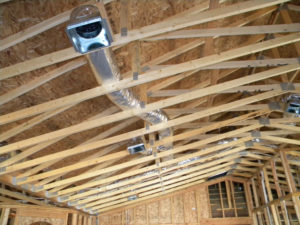 If your house has a forced air heating and cooling system, ductwork plays a crucial role in the distribution of conditioned air within the house. Typically, about 20% of the air moving through the ductwork gets lost due to holes, leakages, and poorly connected ducts. This results in an inefficient HVAC system characterized by high utility bills and uncomfortable indoor environment.
If your house has a forced air heating and cooling system, ductwork plays a crucial role in the distribution of conditioned air within the house. Typically, about 20% of the air moving through the ductwork gets lost due to holes, leakages, and poorly connected ducts. This results in an inefficient HVAC system characterized by high utility bills and uncomfortable indoor environment.
How to Improve the Performance of Your Duct System
Due to the fact that ductwork is concealed in ceilings, walls, basements, and attics, repairing them may prove to be a very difficult task. That being said, there are certain things you can do to enhance the performance of your duct system.
Sealing Leaks
Using mastic sealant or foil tape, you can insulate all the accessible ducts such as those found in the crawlspace, attic, garage, or basement. Don’t use duct tape because this doesn’t last long enough.
Sealing Vent and Register Connections
At the points where connections at registers and vents meet ceilings, walls, and floors, it is common to find disconnected ductwork and leaks. When you are doing your sealing, ensure these areas are properly attended to.
Working with a Ductwork Contractor
As a homeowner, you may choose to hire a ductwork professional for your improvement projects. If you have decided to go this way, ensure the contractor is able to:
- Inspect the entire duct system including the basement, crawlspace, and attic where applicable
- Evaluate the duct supply system as well as return air balance. You will find some duct systems with small air return ducts.
- Replace or repair where necessary any undersized or disconnected ducts and have all the tangled or crashed flexible ducts straightened out.
- Any connections, leaks, and gaps must be sealed to avoid loss of air.
- Any duct improvement project should include a new filter.
Some of the common air duct problems the inspector must watch out for include kinks in the flexible ductwork, torn, leaky, and disconnected ducts, poorly sealed grills and registers, as well as leaks at filter slot and furnace.
The exterior of your home which includes the windows, ceilings, floors, and outer walls must also be sealed and insulated. This is because these areas can save you up to 20% on your heating and cooling costs. In addition, your home will also be more comfortable and together these improvements will enhance the efficiency of your HVAC systems.
If you are a do it yourself person, ensure that you start with the accessible parts of the ductwork. When you get to a point that you don’t understand, get in touch with a HVAC contractor who will use special diagnostic tools to identify and sort out the hidden air leaks.
